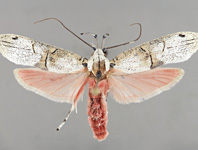Abstract
There are eight described species in Phreatodrobia, minute, phreatic (subterranean aquatic) snails, all stygobitic and endemic to the Edwards-Trinity Aquifer System of Texas. Two species were described from river drift (Pilsbry & Ferriss 1906) and the others more recently by sampling the water flowing from wells or springs (Hershler & Longley 1986b; Hershler & Longley 1987). Recent sampling from spring orifices and the hyporheic zone of streams have extended the known ranges of the phreatic snails of the region and encountered unknown snails (Alvear et al. 2020). Here we describe Phreatodrobia spica n. sp., a rarely encountered species with a large range of about 400 km (Figure 1). We find P. spica in samples with a diverse assemblage of phreatic animals including other species of Phreatodrobia, isopods, amphipods, coleopterans, and mites. Phreatodrobia spica is distinguished from congeners using morphological and molecular evidence and is characterized by an elevated, trochiform shell with unique sculpture that include spikes and pustules. It has an open umbilicus and a complete, reflected lip that is sometimes appressed to the body whorl.
References
Alvear, D., Diaz, P.H., Gibson, J.R., Hutchins, B., Schwartz, B.F. & Perez, K.E. (2020) Expanding the known ranges of the endemic, phreatic snails (Mollusca, Gastropoda) of Texas, USA. Freshwater Mollusk Biology and Conservation, 23, 1-17. https://doi.org/10.31931/fmbc.v22i2.2020.1-17
Brune, G. (1981) Springs of Texas. Branch-Smith, Inc, Fort Worth, Texas, 566 pp.
Diaz, P. & Warren, J.B. (2018) Salado Salamander Monitoring Final Report 2018. Texas Fish and Wildlife Conservation Office, U.S. Fish and Wildlife Service, San Marcos, Texas, 20 pp.
Diaz, P.H., Montagne, M., Norris, C., Aziz, K. & Gibson, J. (2018) Final Report for the Nature Conservancy in Fulfillment of Dolan Springs Assessment. Texas Fish and Wildlife Conservation Office, U.S. Fish and Wildlife Service, San Marcos, Texas, 112 pp.
Folmer, O.M., Black, W., Hoeh, R., Lutz, R. & Vrijenhoek, R. (1994) DNA primers for amplification of mitochondrial cytochrome c oxidase subunit I from diverse metazoan invertebrates. Molecular Marine Biology and Biotechnology, 3, 294–299.
Gibson, J.R., Harden, S.J. & Fries, J.N. (2008) Survey and distribution of invertebrates from selected springs of the Edwards Aquifer in Comal and Hays counties, Texas. The Southwestern Naturalist, 53, 74–84.
https://doi.org/10.1894/0038-4909(2008)53[74:SADOIF]2.0.CO;2
Hershler, R. & Longley, G. (1986a) Hadoceras taylori, a new genus and species of phreatic Hydrobiidae (Gastropoda: Rissoacea) from south-central texas. Proceedings of the Biological Society of Washington, 99, 121–136.
https://repository.si.edu/handle/10088/11314
Hershler, R. & Longley, G. (1986b) Phreatic hydrobiids (Gastropoda: Prosobranchia) from the Edwards (Balcones Fault Zone) aquifer Region, South-Central Texas. Malacologia, 27, 127–172.
https://repository.si.edu/handle/10088/11313
Hershler, R. & Longley, G. (1987) Phreatodrobia coronae, a new species of cavesnail from southwestern Texas. Nautilus, 101, 133–139.
https://doi.org/10.5962/bhl.part.17409
Hershler, R. & Ponder, W.F. (1998) A review of morphological characters of hydrobioid snails. Smithsonian Contributions to Zoology, 600, 1–55.
https://doi.org/10.5479/si.00810282.600
Hoang, D.T., Chernomor, O., von Haeseler, A., Minh, B.Q. & Vinh, L.S. (2018) UFBoot2: Improving the ultrafast bootstrap approximation. Molecular Biology and Evolution, 35, 518–522.
https://doi.org/10.1093/molbev/msx281
Kearse, M., Moir, R., Wilson, A., Stones-Havas, S., Cheung, M. & Sturrock, S. (2012) Geneious basic: an integrated and extendable desktop software platform for the organization and analysis of sequence data. Bioinformatics, 28, 1647–1649.
https://doi.org/10.1093/bioinformatics/bts199
Masters, B.C., Fan, V. & Ross, H.A. (2011) Species delimitation – a geneious plugin for the exploration of species boundaries. Molecular Ecology Resources, 11, 154–157.
https://doi.org/10.1111/j.1755-0998.2010.02896.x
Nguyen, L.-T., Schmidt, H.A., von Haeseler, A. & Minh, B.Q. (2015) IQ-TREE: A Fast and Effective Stochastic Algorithm for Estimating Maximum-Likelihood Phylogenies. Molecular Biology and Evolution, 32, 268–274.
https://doi.org/10.1093/molbev/msu300
Nissen, B.D., Devitt, T.J., Bendik, N.F., Gluesenkamp, A.G. & Gibson, J.R. (2018) New occurrence records for stygobiontic invertebrates from the Edwards and Trinity aquifers in west-central Texas, USA. Subterranean Biology, 28, 1–13.
https://doi.org/10.3897/subtbiol.28.29282
Perez, K.E., Ponder, W., Colgan, D.J., Clark, S.A. & Lydeard, C. (2005) Molecular phylogeny and biogeography of spring-associated hydrobiid snails of the Great Artesian Basin, Australia. Molecular Phylogenetics and Evolution, 34, 545-556.
https://doi.org/10.1016/j.ympev.2004.11.020
Pilsbry, H.A. & Ferriss, J.H. (1906) Mollusca of the Southwestern States, II (Plates V-IX). Proceedings of the Academy of Natural Sciences of Philadelphia, 58, 123–175.
https://www.jstor.org/stable/4063087
Puillandre, N., Lambert, A., Brouillet, S. & Achaz, G. (2011) ABGD, Automatic Barcode Gap Discovery for primary species delimitation. Molecular Ecology, 21, 1864–1877.
https://doi.org/10.1111/j.1365-294X.2011.05239.x
Wade, C.M., Mordan, P.B. & Clarke, B. (2001) A phylogeny of the land snails (Gastropoda: Pulmonata). Proceedings of the Royal Society of London, B, 268, 413–422.
https://doi.org/10.1098/rspb.2000.1372
Weary, D.J. & Doctor, D.H. (2014) Karst in the United States of America: a digital map compilation and database. 23 pp.
https://dx.doi.org/10.3133/ofr20141156


